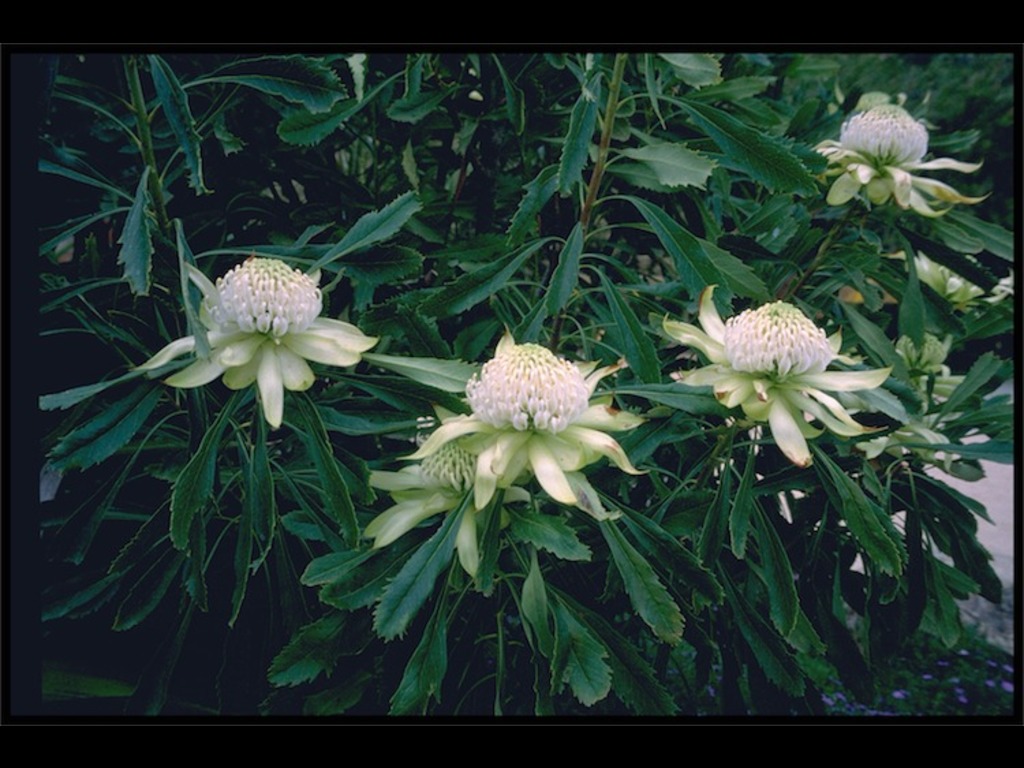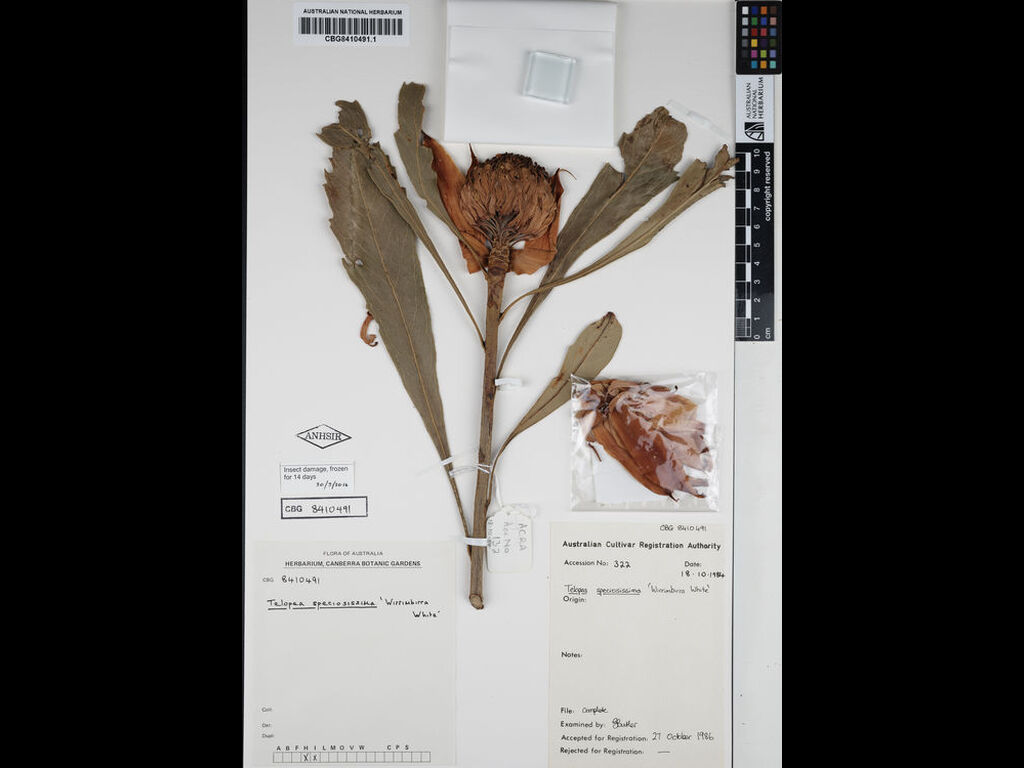Telopea speciosissima 'Wirrimbirra White'
- File Number
- 322
- ACRA Field Book Number
- 253
- Registration Date
- 25/10/1986
- Application Received
- 01/01/1984
- Family
- Proteaceae
- Cultivar Name
- Telopea speciosissima 'Wirrimbirra White'
- Origin
- Telopea 'Wirrimbirra White' is a colour form of T. speciosissima originally discovered in the water catchment area at Kangaloon near Robertson, NSW. The original plant was found in 1970 and cutting material was selected in 1972. The cutting material was brought into cultivation by Wirrimbirra Sanctuary of Bargo, NSW. The cultivar was first received by the Authority in January 1984. The applicant is the David G Stead Memorial Wildlife Research Foundation of Australia, Box 4840, GPO Sydney 2000.
- Characteristics
- This cultivar is a creamy white colour form of the species. The growth form is similar to the species though is not as vigorous. Diagnosis: The buds are an apple green and the inflorescences open to creamy white. Other notes: White waratahs have been recorded in the past, one of the most notable being a plant which grew in a private garden in the Colo area in the 1950's. Cutting material of this plant was not made available and the plant subsequently died without being propagated. The original plant of T. speciosissima 'Wirrimbirra White' is in an area that has suffered fires of varying intensity and is therefore vunerable to complete loss. The plant is in poor condition (1985) with a few stems arising from the lignotuber reaching 2.5 to 3m tall. White forms of the waratah have been known before these two plants and an interesting Aboriginal account for their colour is given in "Gulpilil's Stories of the Dreamtime" compiled by Hugh Rule and Stuart Goodman, pages 108 to 115. The cultivar is drought and frost hardy though seems somewhat more prone to bud-boring insects than most waratahs in Canberra. The cultivar must be grown by vegetative means to preserve the cultivar form. The method of using leaf buds for propagation by Ellyard and Butler as outlined in the "Australian Horticulture" 83(3), p27-31 works well with this cultivar.
- Cultivation
- Suitable for well drained soils, is drought and frost hardy but may need some protection from heavy frosts and also seems somewhat more prone to bud-boring insects
- Publication
- Wrigley, J.W. & Fagg, M. (1989), Banksias, Waratahs & Grevilleas and all other plants in the Australian Proteaceae family: 520 (plate), 541
- Colour Coding
- RHS Colour Chart 1966 perianth: white group 155D perianth: white group 155D style: yellow white group 158C
- Propagation
- Cuttings from semi-firm new growth
- Applicant Name
- David G Stead
- Uses
- As part of a mass planting or mixed in a shrubbery, or as a spectacular feature plant. Cut flowers.
- Availability
- Specialist native plant nurseries
- ANBG Accession Numbers
- ACC322, ACRA253, CBG8703011
- NSL ID
- -

